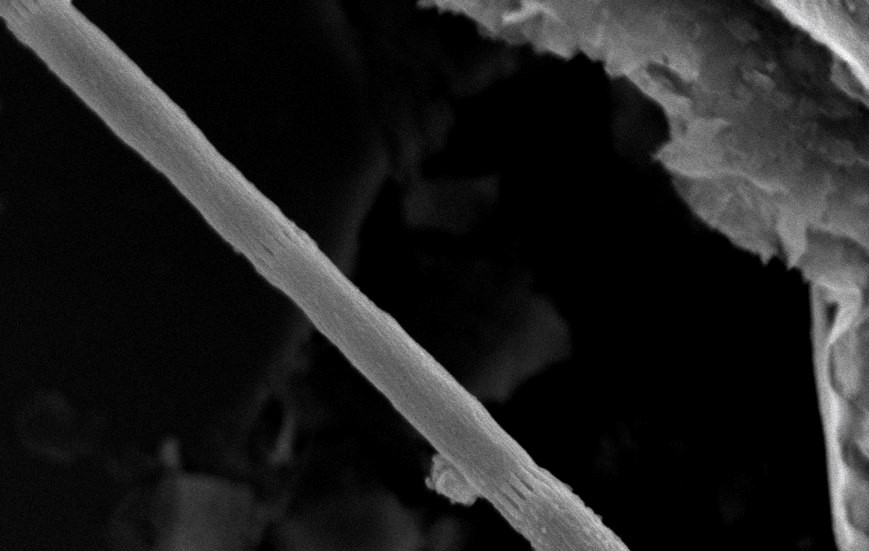 The cable bacteria viewed at 3-micron magnification – credit, OSU press, released
The cable bacteria viewed at 3-micron magnification – credit, OSU press, releasedThere’s something make-believe, almost Pokémon-like in a new species of bacteria found living on a mud flat in Oregon—a species which is basically like electric wiring, and which could inspire a revolution in bioelectronic interfaces.
A type of “cable” bacteria, the new lifeform contains nickel in its body, and forms long strands of individual bacterial tissues connected by a membrane it produces. These features allow it to transfer electrons along the length of its body.
Cheng Li, a postdoctoral researcher at Oregon State University at the time of the research, and Clare Reimers, distinguished professor emerita in the OSU College of Earth, Ocean, and Atmospheric Sciences, identified the new species in intertidal sediment samples from the Yaquina Bay estuary.
Named Ca. Electrothrix yaqonensis after the bay and the Native Americans who have lived there traditionally, the species was described in a new study which OSU Press reported on.
Cable bacteria’s electrical conductivity, unusual among bacteria at large, is a known adaptation, and is believed to have evolved in order to optimize metabolic processes in the sediment environments in which the bacteria live.
The new species features metabolic pathways and genes that are a mix of the Ca. Electrothrix genus and the other known cable bacteria genus, Ca. Electronema. Cable bacteria can live under diverse climatic conditions and are found in various environments, including both freshwater and saltwater sediments.
“This new species seems to be a bridge, an early branch within the Ca. Electrothrix clade, which suggests it could provide new insights into how these bacteria evolved and how they might function in different environments,” said Li.
“It stands out from all other described cable bacteria species in terms of its metabolic potential.”
Li points out the creature’s distinctive structural features, including the largest surface ridges seen among cable bacteria, under which lie highly conductive fibers made of unique, nickel-based molecules.
WONDERS UNDER A MICROSCOPE: $25.00 ‘Bacteria Batteries’ Allow Farmers to Power Their Sensing Equipment with Soil
Nickel is considered a toxic heavy metal in humans, akin to aluminum, cadmium, or lead.
Nevertheless, these fibers enable the bacteria to perform long-distance electron transport, connecting electron acceptors like oxygen or nitrate at the sediment surface with donors like sulfide in deeper sediment layers, the OSU statement said.
ALSO CHECK OUT: Oysters Carry Protein That Kills Bacteria Behind Pneumonia, Strep Throat, and Scarlet Fever: Study
“These bacteria can transfer electrons to clean up pollutants, so they could be used to remove harmful substances from sediments,” Li said. “Also, their design of a highly conductive nickel protein can possibly inspire new bioelectronics.”
Ca. Electrothrix yaqonensis draws its name from the Yaqona people, whose ancestral lands encompassed Yaquina Bay. Yaqona referred to the bay and river that made up much of their homeland, as well as to the people themselves.
SHARE The Story Of This Wild And Wriggling Live Wire Out In The Mudflats Of Oregon…
Source link

